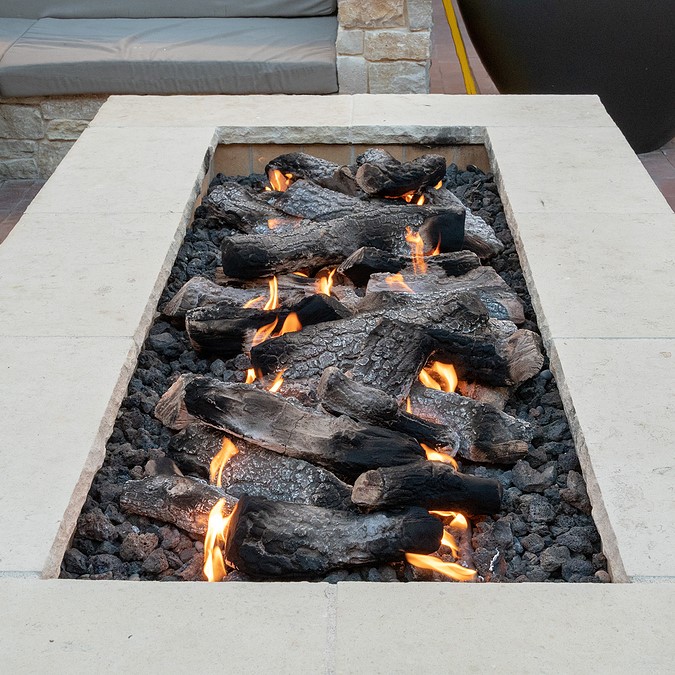Just like fireplaces, fire pits come in many shapes and sizes with the purpose of adding a little warmth and a lot of beauty to a backyard setting. Just about everyone enjoys a fire pit, but here are a few things to know and choices to make before you run out and have one installed.
Check with local zoning
Before taking another step, check with your city or county zoning office to make sure fire pits are lawful where you live.
 Gas or wood?
Gas or wood?
Fire pits, whether pre-made or custom-built, can run on either gas/propane or wood fuel. Gas is easier to ignite and extinguish. Wood gives you the nostalgic look and aroma that many people love. With a gas fire pit, you’ll have to run a line to the appliance; with a wood fire pit, you’ll need to purchase (or chop yourself), haul and store logs.
Have it built in a factory, or constructed on your property
You can buy fine fire pits that are fully contained and ready to set up in your backyard. You also can have a contractor who’s experienced in fire-pit construction build you one with all your exact specifications. Shop around before making a decision on which way to go.
Safe placement
Technically, a fire pit can go anywhere in your backyard where there’s space for it, but safe placement is always the goal.
- Keep the fire pit away from walls of the house, fencing and other backyard items.
- Place the fire pit under the open sky, not beneath tree branches or building overhangs.
- Install the fire pit on flat ground comprised of pure dirt or cement, not on grass or in weedy areas.
- Make sure there’s distance between the appliance and shrubbery.
- Never place your fire pit near areas where accelerants (charcoal lighter, gasoline, etc.) are stored. Or better, never store combustibles near your fire pit.
Safe operation
 Here are seven very important safety tips that will allow you to get years of enjoyment out of your new fire pit.
Here are seven very important safety tips that will allow you to get years of enjoyment out of your new fire pit.
- Burn only wood logs or gas to make your fires. Never use clothing, pressed board, furniture, household garbage, plastics, tree branches or packing materials in your fire pit.
- Accelerants as mentioned above should never be used to get a fire going.
- Never leave an active fire pit unattended.
- Use hardwoods such as oak, beech and elm as they produce fewer flying sparks than redwood, spruce, pine and other softwoods.
- Make sure children know to stay away from the flames; very young children need to be supervised at all times when fire pit is in use.
- Avoid using the fire pit in heavy wind.
- Keep a fire extinguisher handy and train responsible family members to use it.
By following these tips and making a few simple decisions, you’ll be ready to bring an exciting new fire pit to your backyard and enjoy it safely for many years to come.
Fluesbrothers Chimney & Fireplace of Kansas City, KS hopes these tips help you in deciding if a fire pit is right for your home. For your indoors supplemental heating, we offer fireplace and stove installation, chimney cleaning and inspections and all types of repair and rebuilding work. When you need it done right, call Fluesbrothers first at (913) 236-7141.



